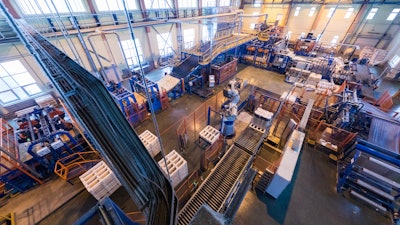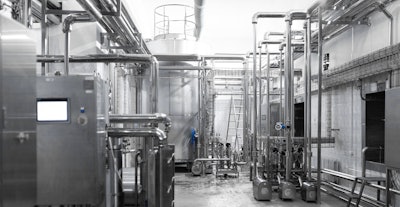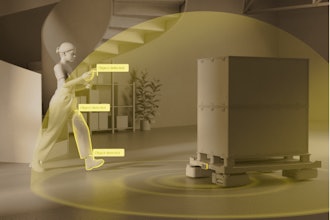
The COVID-19 pandemic has created unprecedented social and economic challenges affecting nearly every industry. Social distancing has led to the curtailment of operations, reduction in active staff, or the complete shutdown of manufacturing facilities, warehouses and distribution centers.
Lost revenue is not the only exposure facing these businesses. Idle industrial facilities are prone to losses and other exposures, including vandalism, arson, theft, vagrancy, freeze-ups and fire risks.
Nonetheless, plant and operations managers can reduce the likelihood of these events by taking a few basic steps to protect idle plans. These include keeping fire protection and life safety systems in service and maintaining building temperatures above 40ºF in all areas to guard against freezing of water supply, fire sprinklers or process piping.
 iStock
iStock
In addition, extra security rounds might be needed depending on industry type. Here are 12 tips for businesses to protect and secure their idle facilities during the COVID-19 crisis.
- Review your security measures. Maintain and test any video surveillance equipment and illuminate the exterior and entrances. Use motion-activated lighting near doors and windows. Keep burglar and fire alarms in good operating condition. Keep and update your current list of all individuals with access to keys and change locks periodically. Supervise security guards and personnel and be diligent in selecting maintenance personnel and any other workers with relatively unsupervised access to the idled facility.
- Restrict access by former workers. Deactivate employee card readers to provide access to the site for all employees who have been laid off or furloughed. Rekey any locks to entrances or sprinkler valves if they were accessible to former employees.
- Double-check entrances. Close and lock all exterior doors subject to unauthorized entry; equip any doors not designated emergency exits with dead bolt locks). Secure all emergency exits to prevent outside entry. Make sure locks, hinges, frames, doors and windows are in good repair and don’t overlook skylights, roof hatches, fences and gates. Use locking ground-level doors to secure buildings with basement entries hidden from view.
- Monitor potential fire hazards. Pay close attention to any openings in the facility that lead to areas with large quantities of combustibles. Check for buildups of trash, soiled work rags and other combustible debris. Keep dumpsters, trash cans and combustible trash away from buildings and avoid locating them under canopies.
 iStock
iStock- Check fire protection. Maintain fire sprinklers and make sure all sprinkler control valves larger than 1.5 inches (40mm) or controlling more than five sprinklers are locked in the wide-open position using sturdy locks, chains, or other security devices (do not use breakaway or combination locks). Inspect sprinkler control valves weekly or more often for improperly or unauthorized closures.
- Continue scheduled equipment inspections. Jurisdictional inspections for boilers, air tanks, or pressure vessels due during the closure should be conducted and operating certificates obtained. Address any code violations immediately.
- Check backup power suppliers. Conduct all routine inspections and maintenance of backup generators in accordance with NFPA 110. Run standby generators weekly for about 30 minutes and exercise transfer switches regularly. Look for fuel, oil, coolant or exhaust leaks from the engines that may need attention. Test diesel fuel periodically and inspect and test starting batteries under load. Conduct a full-load test where all electrical loads are transferred to standby generators prior to reopening.
- Whenever possible, maintain your internal security force. Expand their round duties to include fire stairwells and visual checks of the fire sprinkler control valves. Train security personnel on where utility shutoffs are for sprinkler systems and potable water to mitigate water losses in the event of an accidental leak.
- Notify ownership or management or any problems. Be aware of any individuals who may be disgruntled or likely to cause damage to property through arson or vandalism. Keep in mind that vandalism may precede arson. Designate an employee to be a liaison with law and fire officials. Work with law enforcement officials to educate remaining staff on recognizing unusual activities.
- Don’t overlook the property’s upkeep. Maintain the exterior of the buildings and adjacent grounds and secure all ladders, external stairways and fire escapes allowing access to roof.
- Invite the fire department to tour your site. Conduct a pre-fire planning session to coordinate emergency action plan in the event of a fire at the facility. Familiarize fire department personnel with sprinklers and alarms in service. Make sure the fire department has keys for easy access or knows where to meet on-site security staff.
Keep in mind that any facilities idled even temporarily still require many of the property loss protection measures as if they were functioning under normal conditions.  Panfil
Panfil
Mike Panfil is the Managing Director and National Practice Leader, Property Risk Control at Aon Risk Solutions.
























